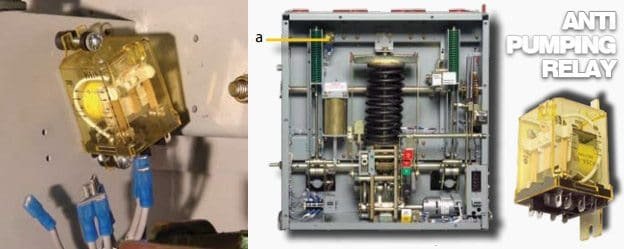The load angle is the angle between the rotor flux and the resultant flux, while the power angle is the angle by which the rotor magnetic axis is ahead of the resultant air-gap flux in a synchronous generator. Understanding the differences between load angle and power angle in the context of electrical engineering is crucial for designing efficient power systems.
The load angle, also known as the torque angle, represents the angle between the rotor flux and the resultant flux, determining the torque limits of a machine. Conversely, the power angle signifies the angle by which the rotor magnetic axis leads the resultant air-gap flux in a synchronous generator.
This difference is vital in managing and controlling power generation and distribution, ensuring the stability and reliability of electrical grids. Grasping these concepts is vital for professionals in the electrical engineering field and those involved in power system design and operation.
As a fellow power system engineer, I understand the potential confusion between load angle and power angle. While they are often used interchangeably, subtle differences exist depending on the context. Let’s delve into these nuances with a step-by-step approach and a practical example:
Defining the terms
- Load Angle (δ): In a synchronous generator, it represents the phase difference between the internal induced voltage (E) and the terminal voltage (V). This angle arises due to the interaction between the rotating magnetic field produced by the rotor and the stationary magnetic field generated by the stator current. Higher loads cause larger δ values, indicating stronger lagging of the terminal voltage behind the induced voltage.
- Power Angle (δ): While sometimes used synonymously with load angle, it also has a broader meaning. In power transmission lines, the power angle refers to the phase difference between the voltage phasors at the sending and receiving ends. This angle directly influences the active power flow across the line, with larger angles translating to greater power transfer.
Context matters
- Synchronous Generator: In the context of a single synchronous generator, load angle and power angle are essentially the same. Both signify the phase difference between the internal and terminal voltages, governing the active power output.
- Power Transmission System: When analyzing power flow in interconnected systems, the term power angle takes precedence. Here, it represents the relative phase shift between voltage phasors at different buses (junction points) across the network. This angle plays a crucial role in determining power transfer direction and magnitude between various interconnected generators and loads.

Practical Example
Consider a simple power system with a single generator connected to a load through a transmission line.
- Generator: The load angle (δ) for this generator is the difference between its internal EMF (E) and terminal voltage (V). Suppose, under a certain load, δ measures 30 degrees. This indicates that the terminal voltage lags behind the induced voltage by 30 degrees.
- Transmission Line: The power angle (δ) between the sending and receiving ends of the line affects the active power flow. As the load on the generator increases, δ at the sending end increases relative to the receiving end. This larger angle difference enables higher power transfer along the line.
Remember, the key takeaway is that while load angle and power angle are closely related, their specific meaning depends on the context. In practice, both concepts are critical for power system analysis and control, ensuring efficient and stable operation of the grid.
Load Angle And Power Angle In Synchronous Machines
The load angle is the angle between the rotor flux Φf and the resultant flux Φr. It establishes the torque limits a machine can attain in a simple manner. In synchronous machines, the load angle refers to the angle by which the rotor magnetic axis is ahead of the resultant air-gap flux. This angle plays a key role in defining the machine’s operating conditions and determining the maximum power that can be transmitted. In practical applications, understanding the load angle helps in optimizing the performance and efficiency of synchronous machines.
Differentiating Load Angle From Power Angle
When it comes to power systems, the load angle and power angle play crucial roles in defining the operation and stability of synchronous generators. The power angle is the angle by which the rotor magnetic axis leads the resultant air-gap flux. In contrast, the load angle refers to the real and reactive power output. The comparison between the two angles is vital in understanding the relationship between the mechanical and electrical aspects of the system.
Practical implications and real-world examples demonstrate the significance of properly considering both load angle and power angle in optimizing the performance and stability of power systems. Understanding the differences between these angles is essential for engineers and practitioners in implementing effective control and protection strategies to ensure reliable and efficient power generation.
Load Angle And Power Angle In Power Generation
The load angle and the power angle are crucial concepts in power generation. The load angle refers to the angle by which the rotor magnetic axis is ahead of the resultant air-gap flux in a synchronous generator. On the other hand, the power angle represents the angle difference between the rotor and the stator magnetic fields. This angle plays a significant role in determining the capability of the synchronous generator. The relationship between these angles and power generation is of paramount importance for maintaining system stability. In power systems, the load angle and power angle directly impact the stability and efficiency of the entire network. Case studies and industry insights further demonstrate the critical influence of these angles on power system stability and efficiency.
Reference Links:
To further solidify your understanding, I recommend these valuable resources:
- How Engineering Works – Difference between Load Angle and Power Angle: https://electricalbaba.com/load-angle/
- Electrical Engineering materials – Torque Angle versus Load or Power Angle: https://electengmaterials.com/torque-angle-versus-load-or-power-angle/
- Quora – What is the difference between power angle, torque angle, and rotor angle of a synchronous machine?: https://www.quora.com/What-is-a-synchronous-motor-7
These concepts are essential for efficient power generation and transmission.







